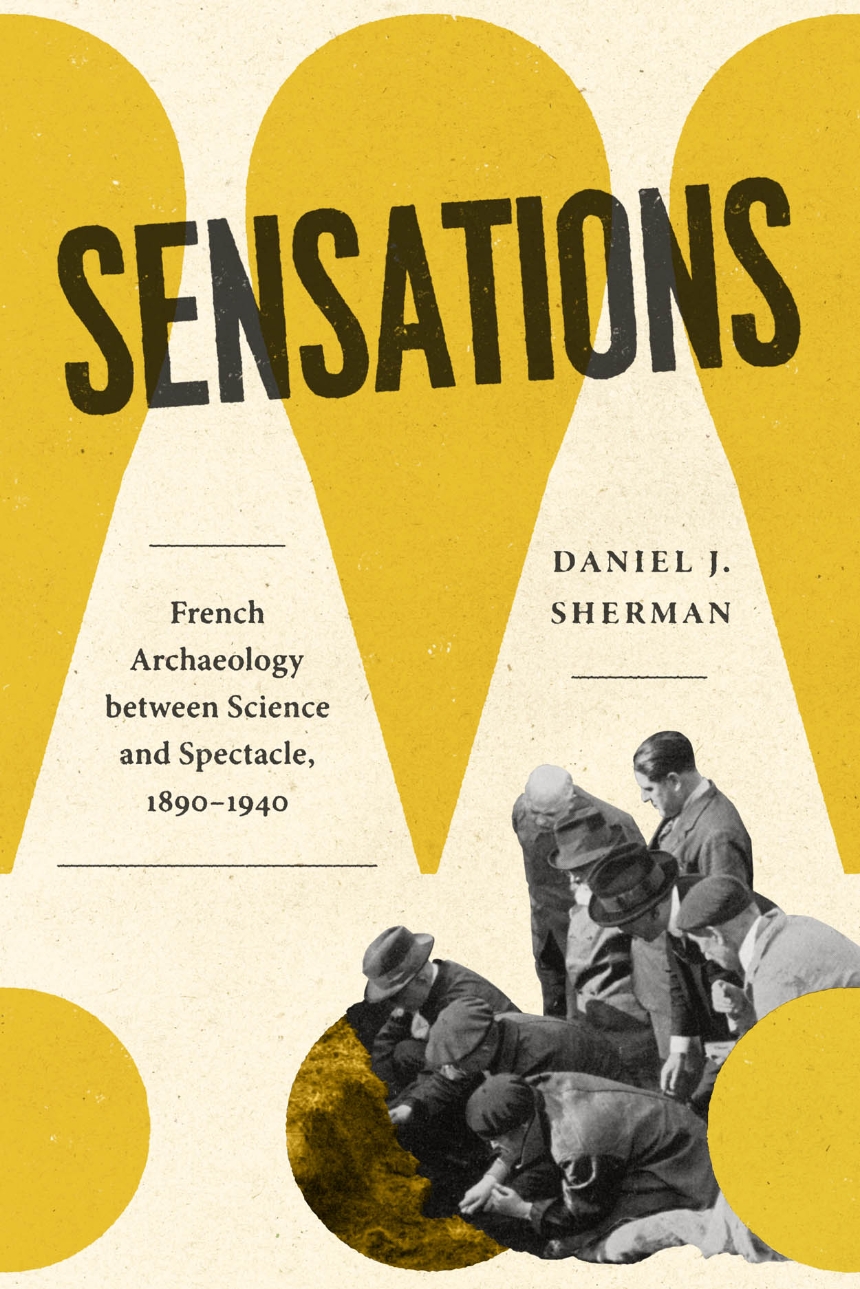Sensations
French Archaeology between Science and Spectacle, 1890–1940
Delves into two controversies from the French archaeological world to illuminate the tension between the discipline’s scientific ambitions and its hunger for media attention.
For well over a century, from Heinrich Schliemann’s sensational discoveries at Troy in the 1880s, through the Tutankhamun excavations of the 1920s, to the recent LIDAR-aided uncovering of lost Maya cities, archaeology has made headlines. In this new history of archaeology and its archival traces, Daniel J. Sherman treats the friction between science and spectacle as constitutive of the field. By exploring two long-running controversies that roiled the French archaeological world and its wider public in the first third of the twentieth century, he gives the science/media relationship a unique place in the history of archaeology—and its present.
The first controversy involves a dispute over the conduct of excavations at Carthage in Tunisia, then under French colonial rule. In the second, accusations of forgery clouded what seemed to be a stunning Neolithic find at a hamlet called Glozel, in the Auvergne region in central France. The affair divided the scholarly community and attracted enormous media attention across Europe and North America. Both controversies occurred at a transitional moment between what has been called the heroic age of archaeology, dominated by explorers and adventurers with little specialized training, and the beginnings of its professionalization. As Sherman shows, the two affairs put the methods, procedures, and networks of archaeology in the spotlight and profoundly shaped its history.
For well over a century, from Heinrich Schliemann’s sensational discoveries at Troy in the 1880s, through the Tutankhamun excavations of the 1920s, to the recent LIDAR-aided uncovering of lost Maya cities, archaeology has made headlines. In this new history of archaeology and its archival traces, Daniel J. Sherman treats the friction between science and spectacle as constitutive of the field. By exploring two long-running controversies that roiled the French archaeological world and its wider public in the first third of the twentieth century, he gives the science/media relationship a unique place in the history of archaeology—and its present.
The first controversy involves a dispute over the conduct of excavations at Carthage in Tunisia, then under French colonial rule. In the second, accusations of forgery clouded what seemed to be a stunning Neolithic find at a hamlet called Glozel, in the Auvergne region in central France. The affair divided the scholarly community and attracted enormous media attention across Europe and North America. Both controversies occurred at a transitional moment between what has been called the heroic age of archaeology, dominated by explorers and adventurers with little specialized training, and the beginnings of its professionalization. As Sherman shows, the two affairs put the methods, procedures, and networks of archaeology in the spotlight and profoundly shaped its history.
Reviews
Table of Contents
Acknowledgments
Introduction: From the Archaeological Archive
1. “For Carthage”: Scientific Networks and the Glare of Publicity
Prologue: The Field and the Network
Serious Men (and Their Archives)
“To Save Carthage”: Networks, Authority, Publicity
Enter the Americans
Heritage and/as Science
2. The News from Glozel: Scholars, Media, and the Making of a Scandal
The Glozel Archive: Exit the State
Exchanging News
Blame the Media
Fake News/News of Fakes
Affairs to Remember
Coda
3. Bodies and Minds: The Work of Archaeology
The Archaeologist’s Police File
Bodies at/of Work
Looking Like an Archaeologist
4. Reality Effects: Staging Archaeology
Performing Carthage
Glozel and the Performative
5. Picturing Things: Archaeology and the Imagined Past
What Are These Objects?
Who Were These People?
Imagining the Glozelians
Epilogue
After Bizerte: 1926–1933–1962
“Glozel For Ever”: 1968–1974–2021
Objects, Knowledge, and the Archive: 2022–
Notes
Index
Introduction: From the Archaeological Archive
1. “For Carthage”: Scientific Networks and the Glare of Publicity
Prologue: The Field and the Network
Serious Men (and Their Archives)
“To Save Carthage”: Networks, Authority, Publicity
Enter the Americans
Heritage and/as Science
2. The News from Glozel: Scholars, Media, and the Making of a Scandal
The Glozel Archive: Exit the State
Exchanging News
Blame the Media
Fake News/News of Fakes
Affairs to Remember
Coda
3. Bodies and Minds: The Work of Archaeology
The Archaeologist’s Police File
Bodies at/of Work
Looking Like an Archaeologist
4. Reality Effects: Staging Archaeology
Performing Carthage
Glozel and the Performative
5. Picturing Things: Archaeology and the Imagined Past
What Are These Objects?
Who Were These People?
Imagining the Glozelians
Epilogue
After Bizerte: 1926–1933–1962
“Glozel For Ever”: 1968–1974–2021
Objects, Knowledge, and the Archive: 2022–
Notes
Index
